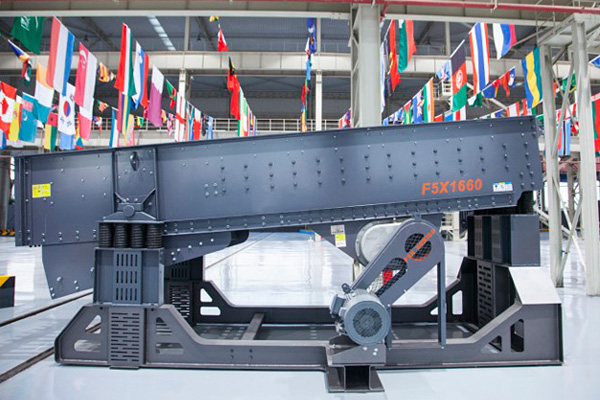A rock mining vibrating feeder is a crucial piece of equipment in the mining and aggregate processing industries. It is designed to transport materials, such as rocks, ores, and minerals, from one part of the process to another, ensuring a smooth and continuous flow. The vibrating feeder’s primary function is to regulate the feed of materials into crushers, screens, and other processing machines, thus preventing blockages and ensuring an optimal material supply.
One of the key advantages of a vibrating feeder in rock mining is its ability to provide a continuous, uniform feed. This is especially important in mining processes where precise control of material flow is required. The vibration ensures that materials are evenly distributed, reducing the risk of material buildup or blockage, which could lead to costly downtime or equipment damage. The design of vibrating feeders can be adjusted to accommodate different types of material sizes and volumes, offering flexibility for various rock mining operations.

Vibrating feeders are available in a variety of designs, including grizzly, pan, and tubular types, each suited for different mining applications. Grizzly feeders, for instance, are commonly used in primary crushing operations where large rocks or ores need to be fed into crushers. The design includes a grid-like structure that helps separate finer materials from larger, harder rocks. Pan feeders, on the other hand, are designed to handle bulk materials more gently, making them ideal for delicate processing stages or handling smaller rocks and aggregates.
Durability and reliability are critical considerations when selecting a vibrating feeder for rock mining applications. These feeders are built to withstand harsh environments, including exposure to dust, moisture, and heavy impacts from large rocks. High-quality materials, such as steel or composite alloys, are often used to construct the feeders, ensuring they can handle the demands of tough mining conditions. Additionally, these feeders often feature adjustable settings for vibration frequency and amplitude, allowing operators to customize their performance based on the material characteristics and specific processing requirements.
Finally, the use of vibrating feeders in rock mining operations can improve overall productivity. Their ability to ensure a steady flow of material, prevent blockages, and protect other equipment from excessive wear makes them a key component of a productive mining system. By improving material flow and increasing productivity, vibrating feeders contribute to the overall success and profitability of mining projects.

